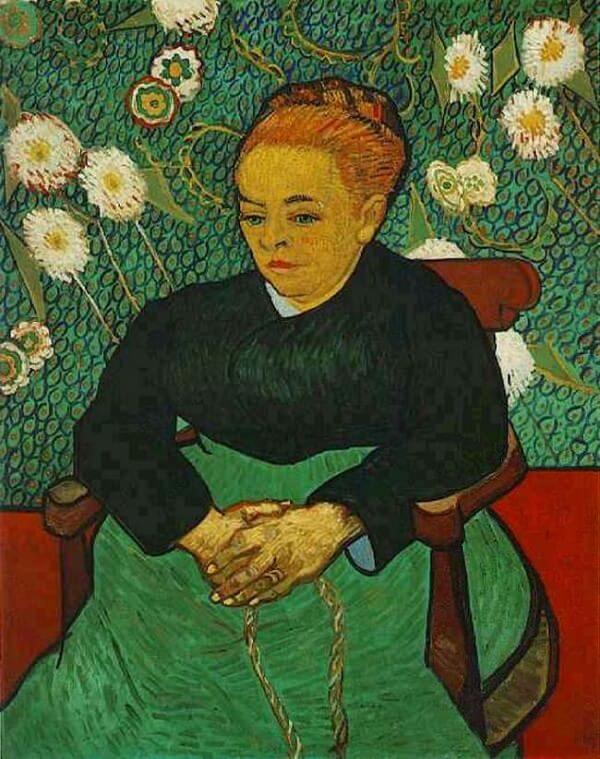La Berceuse, 1889 by Vincent van Gogh

The maternal Madame Roulin inspired in Van Gogh the desire to repeat her portrait a number of times. He thought this image of a mother beside her infant's cradle could serve as a consolation to the lonely, a reminder of happier days. Hearing from Paul Gauguin about "the Icelandic fishermen, exposed to all dangers, alone on the sad sea," the idea came to him "to paint such a picture, that sailors, who are at once children and martyrs, seeing it in the cabin of their boat should feel the old sense of cradling come over them and remember their own lullabies." His need for solace after the first attack was no doubt behind this conception. We have from his hand five versions; they differ mainly in details of the ornament and in minute aspects of drawing.
It is because of the sentimental idea, addressed to common folk, that he painted the picture in a more legible primitive style, like a chromo - to use his own words - with simple, compact shapes outlined in black, flat pieces of color cut out and fitted together almost in one plane. He wished also, perhaps, to please his friends Gauguin and Bernard, to whom he offered copies of the work; they had talked much of popular and primitive art as models for a new style. If this primitivizing form is latent in Van Gogh's previous work, La Berceuse is unique among his paintings in the degree of simplification, and remains an exceptional incident in his art. It is no naive work, however, Van Gogh has noted in a letter the counterpoint of varying reds and greens:
A woman in green with orange hair stands out against a background of green with pink flowers. Now these discordant sharps of crude pink, crude orange, and crude green are softened by flats of red and green."
The color is, in fact, more intricately composed, and has a different aspect according to whether we read it in horizontal bands or as figure against background.Vincent van Gogh plays knowingly with the sharply cutout areas, observing their effects upon one another. To this study we owe the strong construction of the lower half, so rich in angles and so different in mood from the more poetic, fanciful upper half, with its many rounded forms and little parts.




















